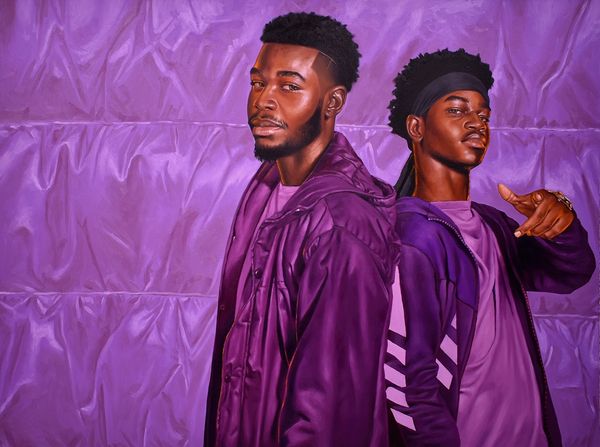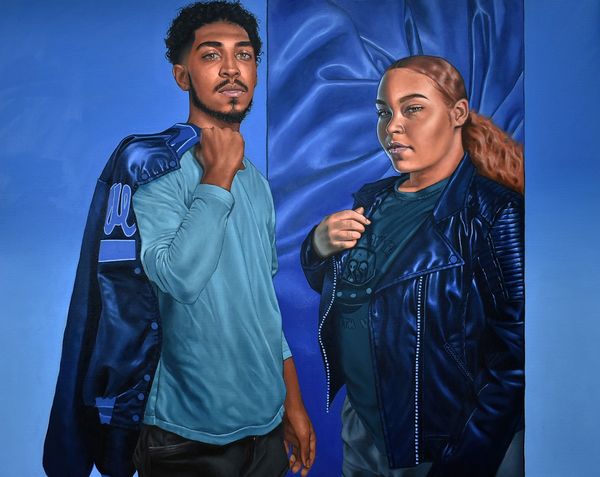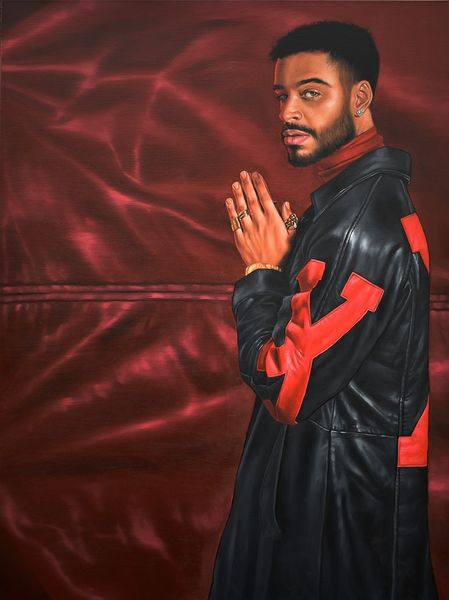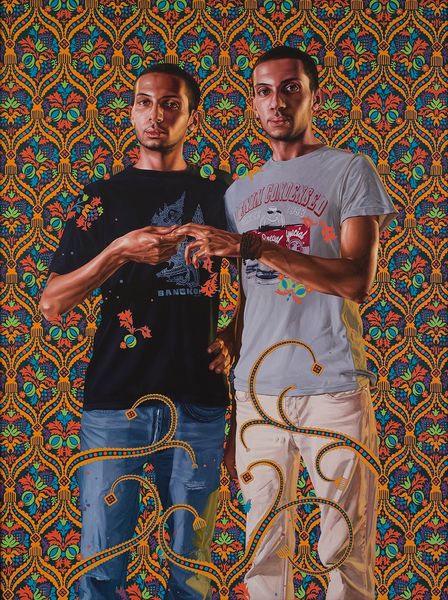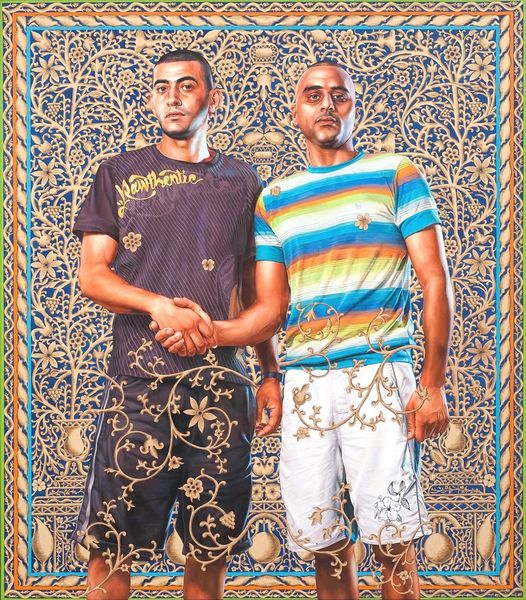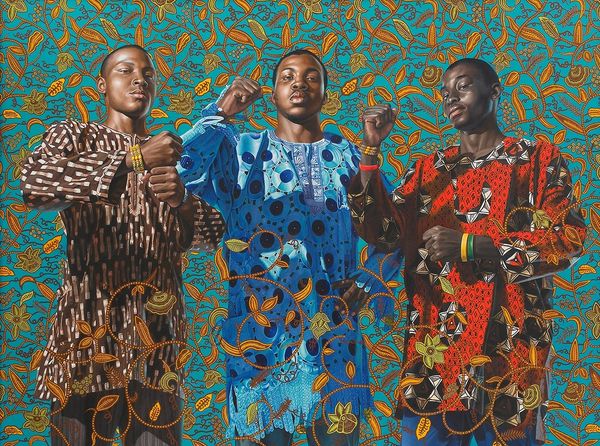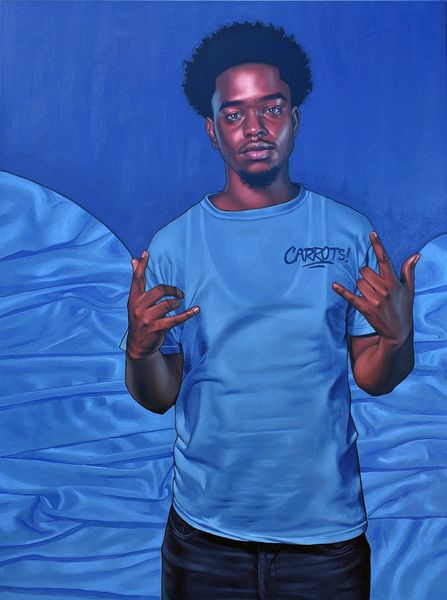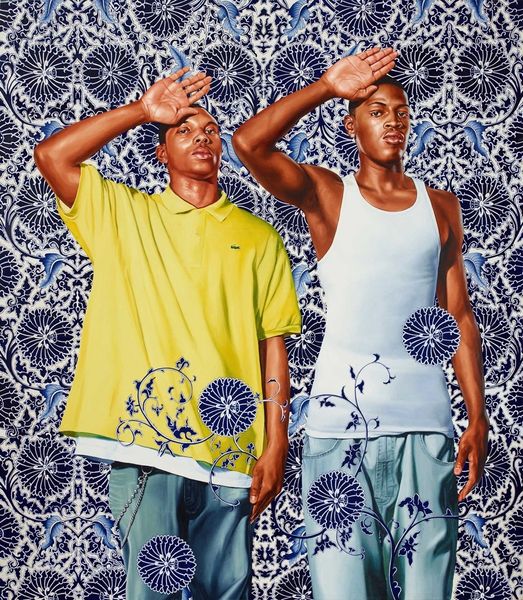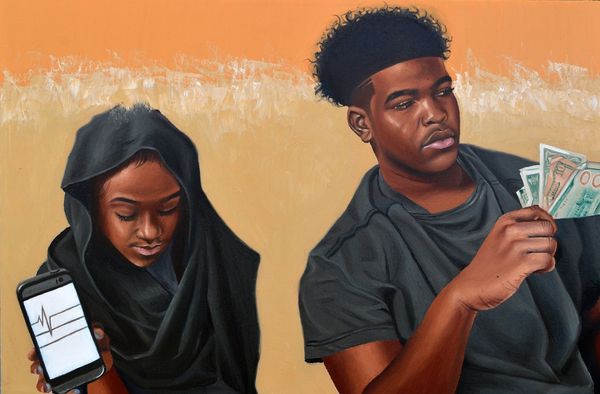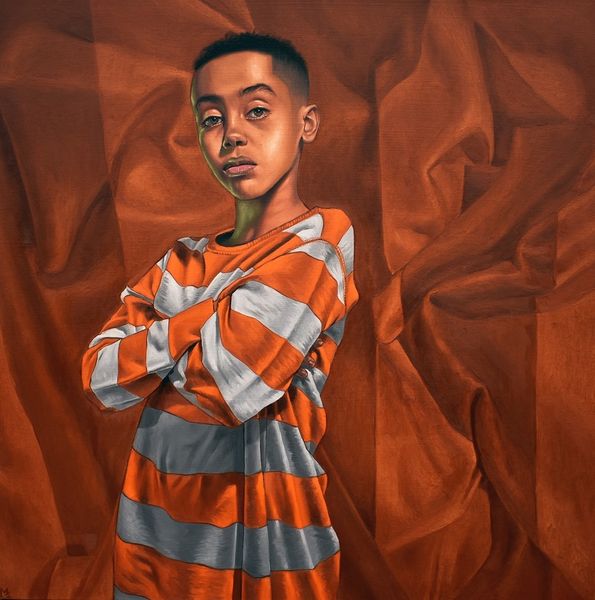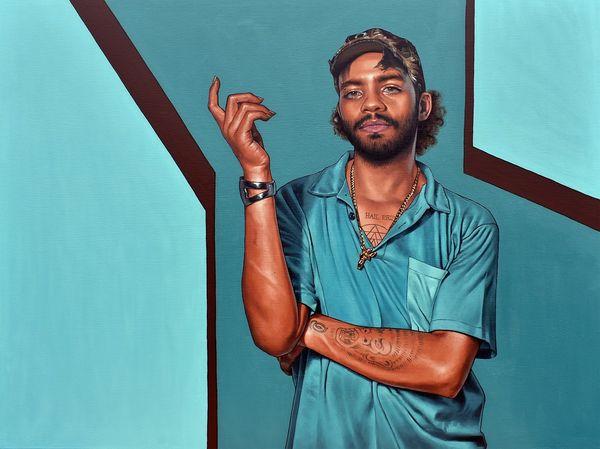
painting
#
figurative
#
contemporary
#
painting
#
portrait subject
#
candid portrait
#
figuration
#
portrait reference
#
pop art-influence
#
genre-painting
#
facial portrait
#
portrait art
#
portrait character photography
#
portrait photography
#
fine art portrait
#
realism
#
celebrity portrait
Copyright: Modern Artists: Artvee
Editor: So, here we have Monica Ikegwu's 2019 painting, "Dap it up." It's a figurative piece, a pretty direct portrait, and something about the matching gold colors—in the clothing and the background—gives it this feeling of… kinship. What do you see in this work? Curator: This painting speaks volumes about contemporary Black identity. The "dap," a handshake with roots in the Black Power movement, signifies solidarity, unity, and resistance. It challenges historical representations that often marginalize Black subjects, instead offering a self-defined image of strength and connection. Editor: So, you're saying it's more than just a portrait of two people, it's about the culture of Black solidarity? Curator: Precisely. The vibrant gold is crucial as well. It could symbolize wealth and aspiration, but more importantly, it evokes royalty, resilience, and self-worth— a reclamation of narratives. Consider how historically, gold has been tied to power structures that excluded Black people. Ikegwu reclaims that symbolism. What do you think about the backdrop pattern? Editor: The diamond pattern? I hadn’t really thought about it. It almost looks like waffles. Does it symbolize anything? Curator: It's an interesting question. Could it represent the idea of shared comfort and home? Food, and especially soul food, has played an integral part in African American identity. Maybe there is an added significance if you compare that "sweetness" to historically bitter relations. Editor: That’s such an insightful interpretation! I hadn't considered the social context embedded within what seemed like just a regular portrait. It definitely changes how I view the piece. Curator: Absolutely, art offers a lens into social and political realities, inviting us to challenge preconceived notions and engage in critical dialogue about identity and representation. Hopefully it inspires you to always reflect beyond the surface, thinking critically about art history.
Comments
No comments
Be the first to comment and join the conversation on the ultimate creative platform.
